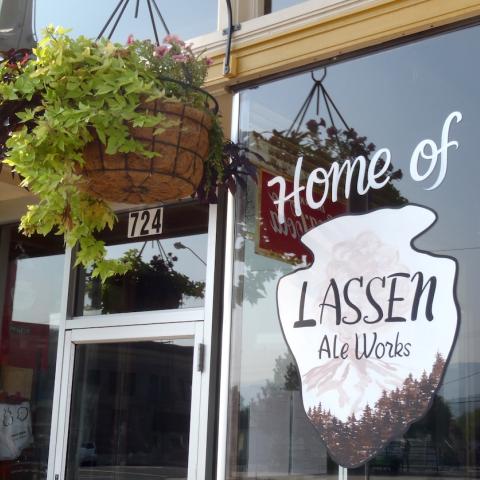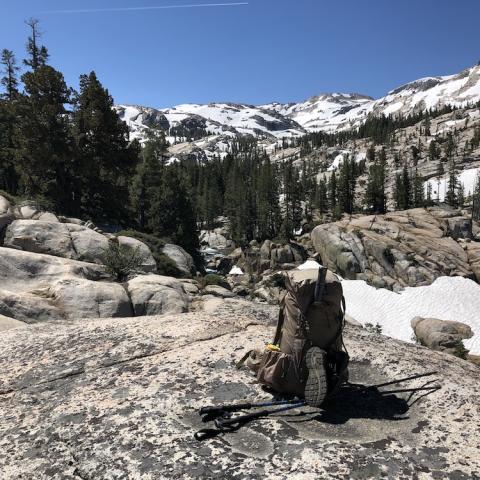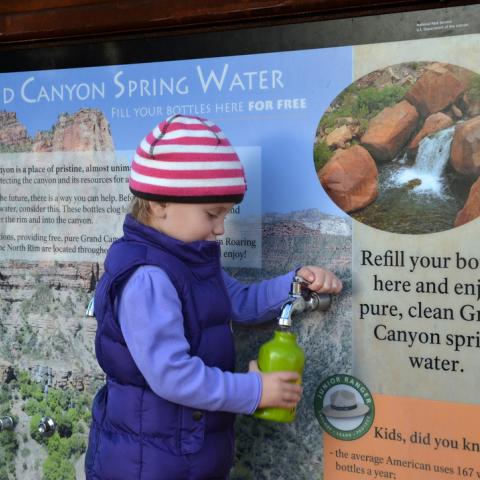
The beauty of Bryce Canyon National Park, winter and summer, is one of the reasons Utah's tourism industry generates more than $1 billion a year in revenues. Will the anti-public lands stance of the state's Republican Party hurt that value?/Kurt Repanshek
Whether the anti-public lands sentiment among Utah's Republican Party was fomented in the state's far-flung rural counties and flowed across the country to Washington, D.C., or vice versa, the shared goal is highly visible in both locations. From the Statehouse in Salt Lake City to the Capitol in Washington, Utah Republicans are working to either force the transfer of federal lands to the states or to open up more federal acres to energy development, mining, and even water storage.
The sentiment is not new, though decidedly reborn in a more determined fashion than during the Sagebrush Rebellion days of the 1970s and 1980s.
Utah's GOP-controlled legislature and the state's governor, Gary Herbert, earlier this year approved resolutions asking the Trump administration to both decommission the 1.35-million-acre Bears Ears National Monument and reduce the size of the 1.9-million-acre Grand Staircase-Escalante National Monument.
U.S. Rep. Rob Bishop, who chairs the Natural Resources Committee, is pushing an even more aggressive public lands agenda, one that would transfer federal lands to states, more aggressively open up tribal lands and those overseen by the U.S. Bureau of Land Management to energy development, roll back royalty valuations placed on oil, gas, and coal leases, accelerate the permitting process for mining projects that would develop "minerals deemed critical to the nation," and develop more water storage projects.
The pushback from recreationalists and conservationists, though largely grassroots, is significant just the same. The Outdoor Industry Association, after staging twice-yearly Outdoor Retailer shows in Salt Lake City for 20 years, is leaving the state over the anti-public lands approach of Utah's leadership despite pleas from the Salt Lake City Council and a $1 million enticement from the Legislature. The estimated economic impact: $45 million in direct spending in Salt Lake City, an estimated $300 million throughout the state. Some folks have written the state Tourism Office to say they won't be spending their vacation dollars in the state until things change.

An October 2015 storm damaged roads and Scotty's Castle in Death Valley National Park, bringing tens of millions of dollars of unexpected expense to the National Park Service/NPS
When it comes to the National Park System, Mr. Bishop is working with the administration "to identify previously declared (national) monuments that are suitable to be rescinded or diminished in size," and scrutinize the National Park Service's budgetary approaches to find out why the agency has a nearly $12 billion maintenance backlog.
"After years of expanding budgets and $750 million in supplemental funding from the 2008 stimulus, NPS has little to show in terms of increased public use and enjoyment of parks or reduction in the maintenance backlog," Mr. Bishop states in Views and Estimates For Fiscal 2018. "The committee notes that the operations (ONPS) portion of the NPS budget continues to increase, while the construction portion of the budget (tied to the reduction of the deferred maintenance backlog) has decreased. This leads us to conclude that complaints of inadequate park funding may have more to do with management priorities than actual funding levels."
Mr. Bishop's views, not surprisingly, are not shared by the Democrats on his committee. They attribute much of the Park Service's problems with making ends meet to Congress's lack of support.
"Last summer, we celebrated the 100th anniversary of the creation of the National Park Service. This critical milestone was originally viewed as an opportunity to invest in the agency and its programs so that it could be prepared for the next century," wrote U.S. Rep. Raul Grijalva, the committee's ranking member, March 3 in a letter to U.S. Rep. Diane Black, who chairs the House Budget Committee. "Unfortunately, the 114th Congress declined to pass a bill that made any real investments in 'America's Best Idea.'
"Congress must provide the National Park Service with the money it needs to address the nearly $13 billion backlog of deferred maintenance that continues to grow thanks to congressional neglect. The agency projects it will take approximately $700 million in new funding to maintain the status quo."
Park advocates question Mr. Bishop's contentions and conclusions, and even wonder if he's visited units of the National Park System that are struggling to make ends meet.
"New parks, land acquisition and management inefficiencies are not the reasons we have a growing maintenance backlog at the National Park Service. The problem is Congress refusing to providing funding to repair roads, visitor centers, and historic sites," said Kristen Brengel, vice president of government affairs for the National Parks Conservation Association. "Year after year, Congress fails to provide money to fix major and minor repairs. The (Arlington) Memorial Bridge has outlived its intended life cycle and is rusting underneath. Congress has a responsibility to pay for its repair.
"Yellowstone just turned 145 years old this month. It shouldn't shock anyone, including Congress, that it has aging roads and infrastructure," she added in an email Friday. "Congress needs to pay for it."
During his lengthy Park Service career, Phil Francis worked closely with many park budgets, including his own at the Blue Ridge Parkway, and has a pretty good idea why the agency struggles to get on top of its maintenance backlog.
“Half of the maintenance backlog is road maintenance. And each year we would get a few million dollars to do road maintenance on the Blue Ridge Parkway, yet our backlog was hundreds of millions of dollars," said Mr. Francis, a member of the Coalition to Protect America's National Park's executive council.

A November 2016 rockfall blocked access in Zion Canyon in Zion National Park/NPS
Park budgets, of which roughly 90 percent of the funds go to personnel costs, leave relatively little for actual maintenance work, he added. The remaining 10 percent or so is divvied up on maintenance, protection activities such as law enforcement, emergency medical services and firefighting, and interpretation, said Mr. Francis during a phone call Friday.
“We spend the bulk of our budget, by far, on maintenance activities, but we have other needs beyond maintenance that we need to provide," he added. “There are a variety of responsibilities that we have that need to be performed if we’re going to protect the park as a whole and provide the services the visitors expect.”
From Fiscal Year 2006 through Fiscal Year 2015, according to the Government Accountability Office, the National Park Service spent roughly $10.5 billion on maintenance projects, and yet the overall price tag for the backlog continued to creep ever higher. While road maintenance needs claimed $6 billion of the outstanding $11.9 billion maintenance backlog, the rest is associated with water systems, buildings, campgrounds, trails, housing, waste water systems, dams, and utility systems.
The report, released this past January, noted that inflation has whittled away the value of the Park Service's annual appropriations, and that the number of park units is increasing without a proportionate increase in funding. However, it did not call on Congress to respond to those problems.
As for Mr. Bishop's interpretation that the Park Service budget has increased and so the agency must be misspending it if it can't reduce the maintenance backlog, another GAO report, prepared at the request of Sens. Michael Enzi, R-Wyoming, and Lisa Murkowski, R-Alaska, and released in January, concluded that while the Park Service's revenues increased 15 percent between 2005 and 2014, that increase didn't keep up with inflation. In the end, the GAO staff found, total funding for the agency actually went down by 3 percent.
Total funding for the Park Service increased in nominal dollars from $2.7 billion to $3.1 billion during this period, but annual appropriations from Congress actually decreased by 8 percent when inflation was taken into account, the report noted.

The Park Service has been spending millions of dollars renovating the Many Glacier Hotel in Glacier National Park/Rebecca Latson
Maintenance in the parks can be a very unpredictable thing, forcing superintendents to juggle funds to address the unexpected. In the past 18 months, there have been landslides across roads in Blue Ridge Parkway, Zion National Park, and Denali National Park; flooding at New River Gorge National River, Sequoia National Park, and Death Valley Natonal Park; storm damage at Olympic National Park as well as at Death Valley; and forest fires at a number of parks, including Great Smoky Mountains and Yellowstone. Grand Canyon National Park routinely, it seems, has to deal with breaks in its Transcanyon water pipeline.
At the Many Glacier Hotel in Glacier National Park, the Park Service has been spending millions to address health and safety concerns.
"I used to work in a regional budget and I have never seen a park budget where the majority of the money wasn’t spent on maintenance activities," Mr. Francis said. "If you look at our requirements, what our needs are, what we can do with the resources that we have, I think park managers make pretty good decisions about allocating their in-park resources.”
While Rep. Bishop rails about land acquisition by land-management agencies, Ms. Brengel points out that "(L)and acquisition is a management efficiency. The land being purchased are inholdings -- this makes it easier for park managers when they don't have a private entity to cater to in a park."
"As for Congress funding operations," she went on, "we need park rangers to keep parks open and accessible to the public. Operations funding hasn't been stable, and many national parks from Shenandoah to Yellowstone have fewer staff that they did five years ago. Congress needs to accept responsibility for underfunding parks for decades. They are making excuses instead of solving the problem which requires money. If the roof on your house caves in, yelling at your kids isn't going to fix the roof. You need to pay the contractor to do it."
In his letter, Rep. Grijalva also pointed out that members of Congress regularly request that units be added to the National Park System.
"Approving these projects, but then denying the agency the increased funding required to manage them effectively, is an abdication of our responsibilities and condems our national parks to an increasingly bleak future," he wrote. "We have the public's support and attention; it is our responsibility to make sure that our parks are prepared to endure another 100 years of telling our national story and preserving our most treasured landscapes."




 Support Essential Coverage of Essential Places
Support Essential Coverage of Essential Places







Comments
The tourists have it all wrong when it comes to boycotting Utah's national parks and national monuments as vacation destinations until the mindset changes. I, for one, will continue to spend my vacation dollars within and around the national parks and monuments of Utah - not because of any love I bear for the republicans (trust me, I don't) - but because I want to spend time in places that may look very different in the future, if the state and congressional republicans have their way (and so far, they have had a grand old time steamrolling over the concerns of others). When those places I love are no more, or are broken down into bite-sized units available only to wealthier subsets of the population, *then*, I will cease visiting and spending my discretionary dollars in Utah.
We are in our second week of six weeks in Utah. Our time has been and will be spent on Federal Land (next week we will be in Bears Ears/Cedar Mesa) seeing as much as we can while it is still open/available. However, what money isn't spent on Federal Land/Parks is going mostly to Nevada, Arizona, and Colorado; that is where we have been getting our gas and supplies. We have canceled our state park reservations and are avoiding eating and shopping locally. The money not going to Utah from us is insignificant in the grand scheme but if enough people do the same, their government will notice. One doesn't have to not visit Utah, one can just work a little to not give tax dollars to their government.
BTW - Zion is absolutely beautiful in March. We are just now exploring the Grand Staircase area, one of my favorite spots in the country. It would be a shame to lose it.
My wife and I just returned from 6 glorious days in Escalante-Grand Staircase and San Rafael Swell BLM lands. WE made a point th thank all the BLM staff in the Visitor Centers for their efforts in preserving and promoting OUR public lands. It would be a shame to downsize any of these and other public lands. It would be a tragedy to open the Esclante/Staircase to coal mining, and it would not make any economic sense, given the abundance of natural gas.
Why can the states not protect their own land ?
The Mormon Church vs Our Public Lands
https://thinkprogress.org/the-bundy-familys-odd-mormon-connection-explai...
https://www.reddit.com/r/exmormon/comments/5ru8ac/public_land_transfer_a...
https://news.vice.com/article/the-oregon-militias-mormon-leader-is-getti...
Hmmm, two pieces about Bundy, who happens to be Morman and a biggoted piece from reddit. What exactly is your point?